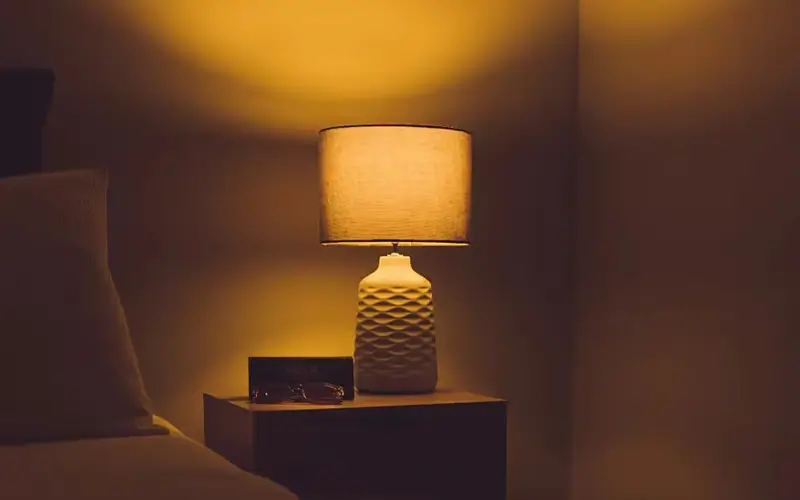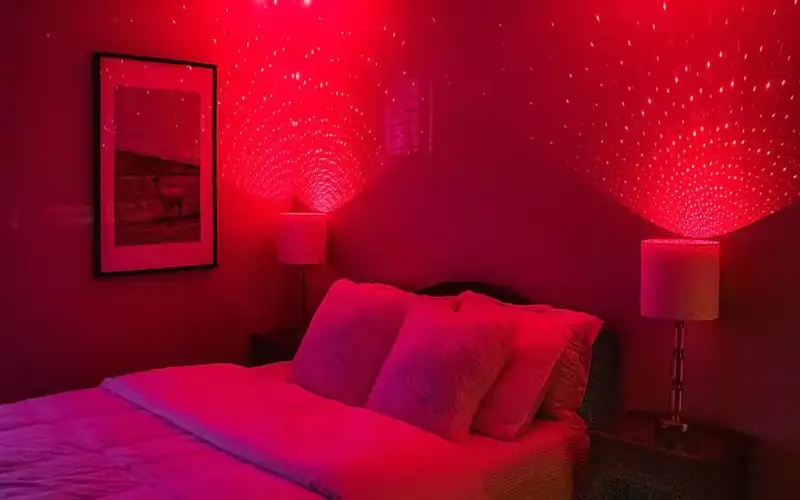
Having a good night’s sleep is very important for our overall well-being. Light color plays an important role in our sleep. As we know, any form of light (natural or artificial) can affect our sleep. Blue light, in particular, is often cited as a major cause of sleep deprivation.
Simply understanding the connection between light color and sleep can help us live healthier lives. In fact, blue light has the most significant impact on mood. If the light you use is blue or white, you may feel uneasy before bed.
In this article, we’ll break down how specific colors affect our sleep-in different ways. What color is considered one of the most effective types of light to promote sleep.
What are the Light Color of Lighting?
Different LED light colors represent different moods, which are also related to the colors we see in nature. Every color and light create an emotional response. Therefore, we need to understand the meaning of color so that we can choose it well.

- Red light color: power, enthusiasm, liveliness, passion, excitement
- Orange light color: confidence, happiness, strength, cheerfulness
- Yellow light color: happiness, hope, deception
- Green light color: freshness, growth, calmness, comfort
- Blue light color: peace, calm, beauty, harmony
- Purple light color: luxury, nobility, depth, success
Which Light Color is Best for Sleeping?
Red light color is the best color to help you sleep. Especially the orange sunset red, which is warm and rich, makes people calm. Red light color causes your brain to produce the sleep hormone melatonin, which can help you relax physically and mentally as you fall asleep.

Research has found that the body’s melatonin levels are controlled by sunlight. During the day, the sun suppresses the secretion of melatonin, the body’s signal to wake up. Blue is the worst, it’s a calming color. But it’s not suitable for lighting up bedrooms. Because blue light color disrupts sleep cycles and reduces melatonin production. That’s why you should avoid using blue-light-rich smartphone, tablet, and desktop screens at night.
Red, as well as being a personal favorite color, has been found to help induce sleep. Of course, a bedroom lit only in red is not suitable for reading. But you can choose a color-changing LED strip (RGB or RGBW) to help adjust your mood during sleep.
What Light Color Affect your Mood and Sleep?
Different light colors will have different emotions, and of course, they will also affect sleep. The quality and direction of light can also have a huge impact on our mood, sleep or mental state.
- Brightness – Bright or dark light can affect mood and sleep. Generally, brighter lights make people feel better and sleepier, while darker lights have the opposite effect.
- Hue – Light interacts with our moods, sleep patterns and the natural environment more than we think. Blue artificial light is more effective at promoting wakefulness than traditional incandescent light bulbs.
- Saturation – When it comes to emotion, the intensity of a hue makes a difference. The more intense the hue, the more effective the color.
Would it Be Better to Sleep With Other LED Light Colors?
If you want a soft glow at night, pink is the color to try. Actual sunrise may be too early for most people, and if you need light to wake up on time in the morning, pink lights may be a good choice.
Alternatively, a pink light source is a good choice for your child’s bedroom. Not only do they give a fairytale feel, but they are also soothing. As an alternative to traditional lighting, pink lights can help create the right atmosphere in a yoga studio or your favorite relaxing space.
How to Create the Perfect Sleeping Environment?
Choosing the right shade of light color to aid sleep can help you fall asleep. To create the best sleeping environment, consider these tips for incorporating warm light into your bedroom:

- Use warm white LED bulbs with a color temperature of around 2700K-3000K in bedroom bedside and wall lamps.
- Avoid using bright or blue-emitting devices, such as smartphones and tablets, before bed.
- Use blackout curtains or a sleep mask to block outside light.
- Consider installing LED strip lights or under-cabinet lighting to create soft ambient light in the bedroom.
In conclusion
Choosing the best sleep light color can relax your body and promote sleep. Red light is preferred to promote sleep, while incorporating warm light. You can choose warm white light with a color temperature of 2700K-3000K, and you can create a comfortable and warm atmosphere. That is conducive to peaceful sleep. Incorporate these tips into your bedroom lighting design for a restful and rejuvenating night’s sleep. We are an LED strip light and LED neon flex factory, please contact us if any needs.
FAQs
The best LED colors for sleep are red and warm white, with color temperatures around 2700K-3000K. This soft, warm light mimics the natural glow of a sunset, promoting relaxation and helping to signal to the body that it’s time to wind down and prepare for sleep.
Blue LED lights have been shown to help reduce anxiety and promote relaxation. Blue light has a calming effect on the mind and body, making it a great choice for creating a soothing atmosphere in spaces that require relaxation, such as bedrooms and relaxation areas.
Bright, cool colors like blue and white are known for their stimulating and energizing effects, making them ideal for awakening and increasing alertness. These colors mimic the brightness of daylight, helping the body send arousal signals to feel more alert and energized.
Soft, warm colors, such as warm whites, beiges, and soft blues, are thought to calm and soothe the mind and body. These colors create a relaxing atmosphere and help reduce stress and anxiety, making them ideal for bedrooms, meditation spaces, and relaxation areas.
Bright colors like yellow, orange, and light blue. These vibrant colors are often associated with happiness and positivity. These colors can help lift your mood, increase energy levels, and create a cheerful and optimistic atmosphere in any space.
